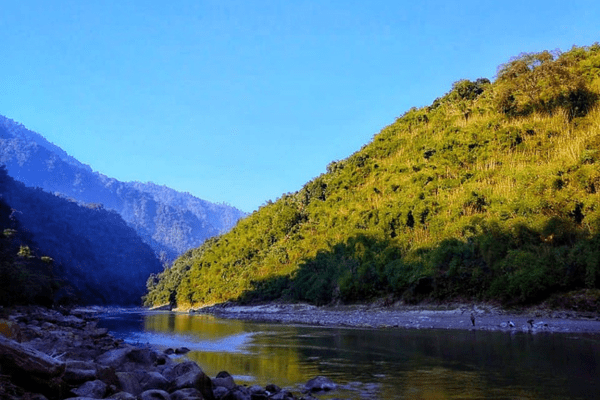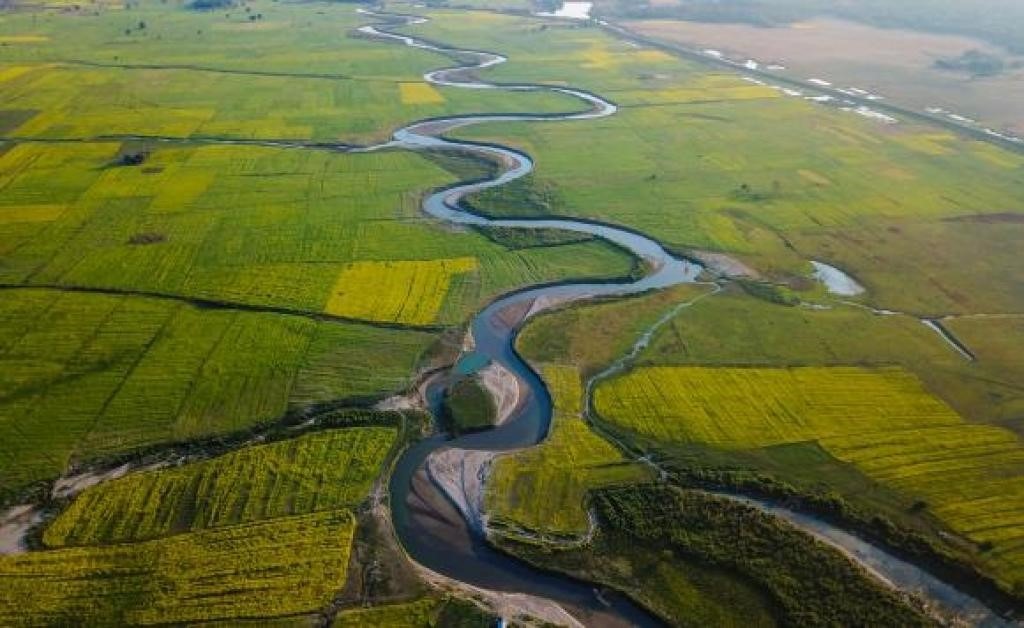Jiadhal River, a north-bank tributary of the Brahmaputra River, is threatening food security in Assam due to its frequent floods and heavy silt deposition.
About Jiadhal River:
- Jiadhal River is a north-bank tributary of the Brahmaputra River.
- It originates in the lower Himalayan ranges in Arunachal Pradesh at an altitude of 1247m.
- The river flows through Assam and meets the Brahmaputra near Majuli Island, specifically near Selamukh in Lakhimpur district. After the construction of an embankment over the Kherkutiya Suti of the Brahmaputra, it confluences with the Subansiri River.
- The total length of the river is 187 km.
- It passes through a narrow gorge in Arunachal Pradesh, entering the plains of Assam in Dhemaji district where it flows in braided channels.
- The catchment area of the river is 1346 sq. km. The river is known for carrying heavy silt load during the rainy season, which deposits on its bed in the plains, considerably raising its riverbed.
- It is characterized as a flashy river that frequently changes its course during flash floods and produces floods with sudden, high discharge over short time intervals with high sediment load and debris.
- The river experiences heavy rainfall in its sub-basin, affecting its flow and sediment deposition.
- The upper part of the Jiadhal basin is hilly (Himalayan range), and from the middle part onwards, it is a plain area.
Ref:Source
| UPSC IAS Preparation Resources | |
| Current Affairs Analysis | Topperspedia |
| GS Shots | Simply Explained |
| Daily Flash Cards | Daily Quiz |



